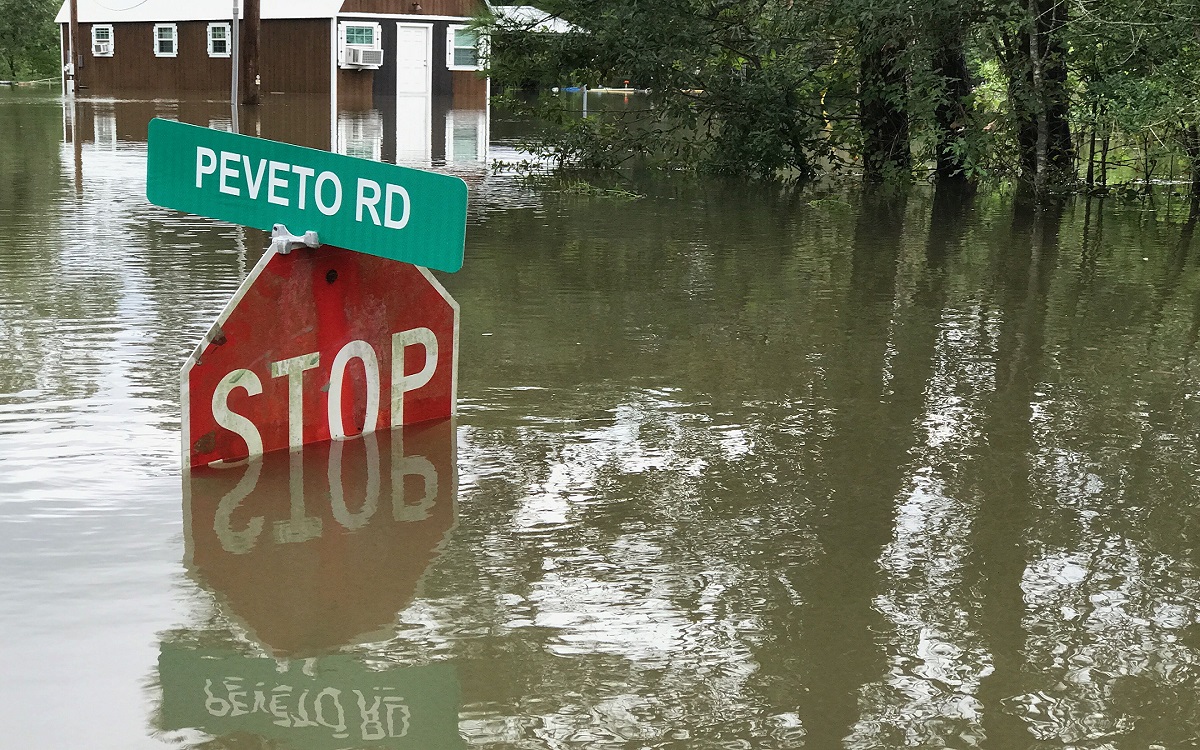It’s been almost a month since Tropical Storm Imelda slammed into Texas. The news cycle may have moved on, but for affected residents, recovery is far from complete.
"Imelda wasn't supposed to devastate whole neighborhoods," said Sierra Club Lone Star Chapter communications coordinator Courtney Naquin. "But it did the same thing [Hurricane] Harvey did."
Naquin grew up in Southeast Texas, one of the areas flooded by the storm. Tropical storm warnings are issued a few times every year, she says. Most people don't bother to evacuate—or can't afford to.
Naquin's family, who still live in Southeast Texas, spent the year after Harvey living in a trailer as they repaired their flooded home. They'd been back in their home for just a year when Imelda struck. In September, they were forced to start rebuilding all over again.
Imelda was one of the wettest tropical cyclones to ever strike the continental US, dumping more than 40 inches of water on parts of eastern Texas. It left hundreds stranded in flooded homes and killed at least five people. Many of those whose lives were upended by Imelda had barely recovered from Hurricane Harvey, the other 1,000-year storm to hit the area in just over two years.
Climate change is making storms like Imelda wetter and fiercer. The fossil fuel industry isn't just responsible for the global warming that feeds these monster storms. When storms hit, refineries release large amounts of industrial pollutants, many of which cause cancer.
During Tropical Storm Imelda, 100,000 pounds of pollutants—many carcinogenic—were released. The biggest offender? The ExxonMobil facility in Beaumont, Texas, which emitted a whopping 36,000 pounds of pollutants. The ExxonMobil refinery in Bayview, Texas, released another 5,300 pounds.
As Sierra Club organizer Bryan Parras details, something very similar happened during Hurricane Harvey: 8.3 million pounds of pollutants were released, and toxins from flooded facilities contaminated the air and soil. It doesn't help that Texas governor Gregg Abbott suspended environmental safeguards in the aftermath of both storms—giving polluters a free pass at the expense of public health and safety.
Megastorms can also stir up a witches' brew of toxic waste at Superfund sites. During Hurricane Harvey, the San Jacinto Waste Pits Superfund site lost its protective cap, causing dioxin levels in the San Jacinto River to spike to 2,000 times the level deemed safe by the EPA.
During Imelda, the swollen river also pushed a barge onto the waste pits, leaving residents concerned that they’ll be exposed to even more of the toxin, which is known to cause cancer and birth defects. Those living near the waste pits—many of whom are low-income—already suffer from extraordinarily high cancer rates.
As we saw during hurricanes Harvey, Katrina, Maria, and many others, it is communities of color, Indigenous communities, and low-income communities that are most vulnerable to disaster. They're nearest to fossil fuel facilities and other industrial sites, which leaves them more exposed to dangerous emissions during storms. They're also the closest to Superfund sites like the San Jacinto Waste Pits, which can spread their toxins during a storm’s chaos. With fewer financial resources, they have the hardest time rebuilding in the storm’s aftermath.
Even when the weather is clear, Southeast Texas’s working-class communities of color are exposed to hazardous quantities of pollutants like ethylene oxide. They’re treated as disposable by the regulatory entities that are supposed to protect them, like the Texas Commision on Environmental Quality. Currently, the TCEQ is working to erode the rules that protect vulnerable communities from this known carcinogen.
If you want to help those communities most affected by Imelda, please consider donating to an organization with deep ties to them. Here are a few suggestions, courtesy of Naquin and Parras.
- West Street Recovery
- Home Coalition
- Southeast Texas Food Bank
- Cardinal Emergency Fund
- Southeast Texas Emergency Fund
As crucial as these recovery efforts are, they are not enough. By the end of the century, Texas will have an 18% chance of seeing a storm as severe as Hurricane Harvey every year if carbon emissions are not curbed. We need to prevent storms like Imelda from becoming even more common and even more devastating by moving beyond dirty fuels to a clean energy economy.
